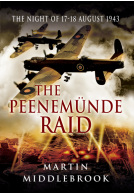Malta Strikes Back (ePub)
The Role of Malta in the Mediterranean Theatre 1940-1942
Imprint: Pen & Sword Aviation
File Size: 43.1 MB (.epub)
Pages: 264
ISBN: 9781473892460
Published: 6th September 2017
| Other formats available - Buy the Hardback and get the eBook for free! | Price |
|---|---|
| Malta Strikes Back Hardback Add to Basket | £18.75 |
“The key to our position in the whole Mediterranean lay in Malta.” (Tedder)
Two of the greatest strategic mistakes by Hitler involved failure to take control of two key locations, Gibraltar and Malta; between them these two were able to influence, and at times dominate, the Western Mediterranean area, and surrounding land masses. Malta, with its strategic partner, Alexandria (and Egypt) likewise dominated the Eastern Mediterranean and surrounding land masses.
Malta only existed strategically for its ability to attack the enemy Lines of Communication between European bases (now stretching from France to Crete) and North Africa. Every piece of equipment, every man and all supplies had to move from Europe to North Africa, the majority by surface vessel, and had to be gathered at a limited number of port facilities in both locations, which made those locations key choke points and targets. Once in North Africa, everything had to move along the main coastal road from the supply ports to dumps and to units. Every campaign is to a greater or lesser extent one of logistics, the Desert War more so than most. It has often been called a ‘war of airfields’ but it is more accurately described as a ‘war of logistics’, with airfields playing a major role in defending one’s own supply lines whilst striking at the enemy’s lines. If Malta could not attack, then it was a drain on resources; but in order to attack it had to protect the infrastructure and equipment needed for attack.
The ability to take a pounding, shake it off and fight back was the key to survival. The Island required determined leadership, external support dedicated to supplying the Island, and the committed resilience of all those on the Island to ensure success. This is the story of how Malta rose to meet the challenges facing its defences during the Second World War; how it struck back and survived one of its darkest eras.
This is a detailed account of the air war based around Malta during the long siege of the island, giving a more balanced picture of the island’s role than is normally the case.
History of War
Read the full review here
Featured in 'New and Noteworthy'
WWII History, August 2019
As featured by
Warship World
...well-told story about a small but vital island that fought tenaciously in World War II.
Indy Squadron Dispatch
The author has written over forty books about air campaigns and operations during the Second World War. The title of this book explains its content. There are six chapters, the first being the introduction, and the other five periods of the war as it affected Malta from June 1940 until November 1942. There are six appendices, providing information on aspects of the campaign during the same period.
British Military History - Rob Palmer, M.A.
The book provides a chronological account of the events in respect of the air war over Malta and central Mediterranean during these two years. It covers the fighters, maritime-strike aircraft, photo-reconnaissance and bombers that operated from Malta. As such, the narrative can jump from one aspect of air operations to another, which I found a little distracting. In addition, as a reader, I sometimes found myself moving forwards in time, and then returning to an earlier date, which confused me occasionally.
This should not distract from the overall intention of the book, namely to provide an account of the differing elements of the R.A.F. units based on Malta during this critical period. I am undecided whether it would have been better to separate out the elements and units more, but on the other hand, all aspects were interconnected, and to a degree interdependent, which adds strength to this book. I am pleased that the maritime-strike, photo-reconnaissance and bombing operations are covered well. In my humble opinion, they tend to be neglected against the land operations in the Western Desert, but to me, the victory at El Alamein was actually won at sea, by the aircraft and submarines operating from Malta. Your view may differ, I accept. I am disappointed, however, that the Detachment from No. 235 Squadron that was based on Malta in June to August 1942 appears to be missing from the Order of Battle in Appendix ‘D’, and that this detachment formed the main strength of the new No.227 Squadron.
Overall, it is well written and well-illustrated. I found it a fitting tribute to the personnel who served on Malta, and it does provide a good account of this important aspect of the Second World War in the Mediterranean
As featured on...
Digital Digging
★★★★★ In short, this is a great story well told and I congratulate both author and publisher for a job well done.
Ned Middleton, Amazon Reviewer
Read the complete review here.
The only community to ever receive the George Cross has inevitably built up a few myths and legends. From 1940 to 1942, the island withstood heavy enemy air attack, not only survived but made a significant contribution to the defeat of the Axis in North Africa and supported the invasion and surrender of Italy – Very Highly recommended.
Firetrench
Read the complete review here.
About Ken Delve
Ken Delve served 20 years in the Royal Air Force as a Navigator and during that time developed his passion for aviation and military history. From researching and publishing the history of his first squadron – 39 Squadron, which had played a major role in defeating Rommel’s supply lines – he has subsequently written over 40 books and numerous articles. His most recent work is a 3-volume set covering the Desert War, Malta’s offensive role, and the campaign in Italy.



















